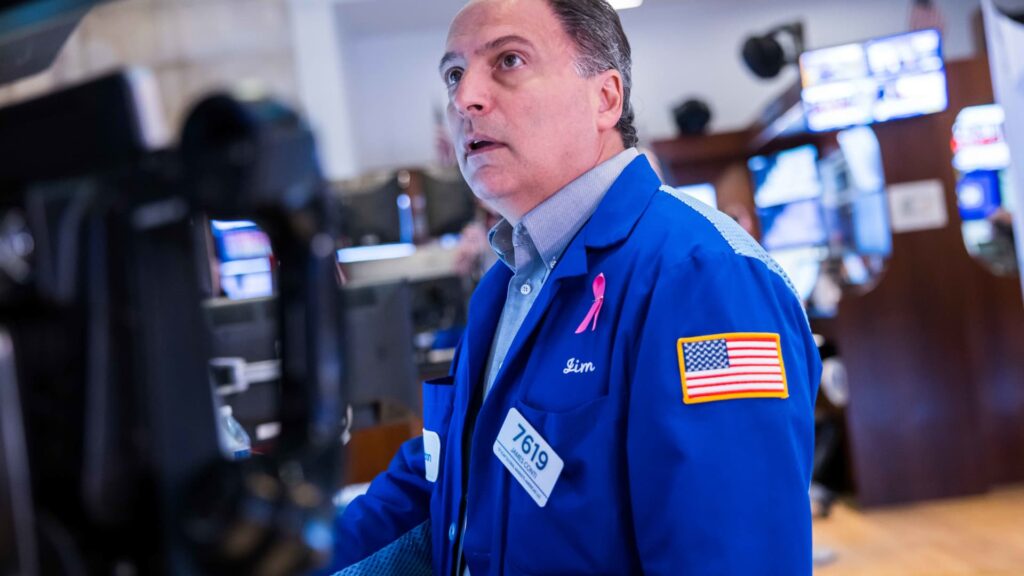
NEW YORK – The S&P 500’s rally to record highs was abruptly halted on Friday following President Donald Trump’s comments about terminating trade talks with Canada. This development has reignited concerns over global trade tensions, which had previously been easing and allowing the broad market index’s climb.
Immediate Impact
The S&P 500, a key benchmark, traded just below the flatline after initially rising by 0.76% to a high of 6,187.68, surpassing its previous record of 6,147.43. Meanwhile, the Nasdaq Composite, which also reached an all-time high, reversed earlier gains and was last down by 0.1%. The Dow Jones Industrial Average, although off its highs for the day, remained more than 200 points higher, marking a 0.5% increase.
Key Details Emerge
Stocks cooled off from their session highs after Trump announced on Truth Social that trade talks between the U.S. and Canada were being terminated. This statement came after investors had initially driven up equities following Commerce Secretary Howard Lutnick’s comments to Bloomberg News. Lutnick had stated that a framework for trade between China and the U.S. had been finalized and that the Trump administration expected to reach deals with 10 major trading partners imminently.
Industry Response
The announcement comes as Wall Street tries to navigate an ever-changing global trade landscape. The market’s volatility underscores the unpredictable nature of trade negotiations under the current administration.
“Negative trade headlines haven’t been a feature of the market narrative for a few months, so the sell-off [is] more about the market remembering how unpredictable and capricious the trade talks can be,” said Jamie Cox, managing partner at Harris Financial Group.
By the Numbers
- S&P 500 high: 6,187.68
- Previous S&P 500 record: 6,147.43
- Dow Jones increase: 200 points or 0.5%
- Nasdaq Composite change: -0.1%
What Comes Next
The timing is particularly significant because the market had been on a recovery path since February, driven by hopes for business-friendly policies from the Trump administration. However, stocks tumbled after the president initially decided to implement stiff tariffs. At its low in April, the S&P 500 was down nearly 18% for 2025. The benchmark then began a stunning comeback after Trump eased some of the harshest tariff rates and the U.S. began negotiations for trade deals.
Background Context
This development builds on a series of trade-related announcements that have kept investors on edge. The global trade environment remains fluid, with each new statement or policy shift causing significant market reactions.
Expert Analysis
According to sources familiar with the negotiations, the move represents a significant shift from earlier optimism that had buoyed markets. Experts warn that the lack of a clear trade policy could continue to create uncertainty, affecting both domestic and international markets.
Regional Implications
Meanwhile, industry experts warn that the termination of trade talks with Canada could have broader implications for North American trade relations. The potential disruption could impact various sectors, from manufacturing to agriculture, which rely heavily on cross-border trade.
Timeline of Events
- February: S&P 500 reaches new high on policy hopes.
- April: S&P 500 drops nearly 18% due to tariff implementation.
- Late Thursday: Commerce Secretary Lutnick announces trade framework with China.
- Friday: Trump announces termination of U.S.-Canada trade talks.
The move represents a significant shift from the stabilization seen in recent months, leaving investors and analysts to speculate on the future of U.S. trade policy and its impact on global markets.




